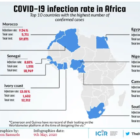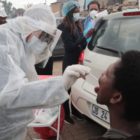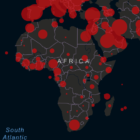Top 10 in Data Journalism
Data Journalism Top 10: Coronavirus Super-spreaders, Massive Unemployment, COVID-19 Life Expectancy, Violent Cops
|
Economies around the world have taken a big hit as countries implement lockdown measures to curb the spread of the coronavirus. Our NodeXL #ddj mapping from May 4 to 10 finds The New York Times looking into businesses that could be potential infection super-spreaders, and the alarmingly high unemployment rate, while German news media NDR and ZDF heute have examined lost life expectancy due to COVID-19 and the importance of intensive care beds. While Reuters published an important analysis into the use of little-known law that is increasingly being used to grant immunity to police who have used excessive force.









